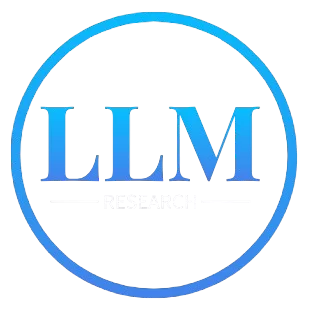Unmasking the Invisible Threat: A Multifaceted Analysis of Artificial Fog Technology
Introduction
In this age of technological innovation, we must grapple with the inherent duality of scientific advancements—their capacity for good and potential for misuse. This analysis delves into the complex world of aerosolized fogs, specifically those generated using techniques similar to those detailed in the Weiss-Verdier patent. We aim to scrutinize the underlying science, identify risks, and propose robust strategies to counter potential malicious applications while ensuring its responsible use.
I. Technical Deconstruction of the Weiss-Verdier Patent and Its Modern Counterparts
In summary, understanding the Weiss-Verdier patent requires that we move beyond its peaceful beginnings and analyze its potential for malicious adaptations. By combining our understanding of technical aspects, we can develop a series of creative, yet evidence-based countermeasures. This will not only help to protect communities from immediate threats, but will also establish the basis for a responsible and ethical framework when dealing with dual-use technologies.
Expected Outcomes
Introduction
In this age of technological innovation, we must grapple with the inherent duality of scientific advancements—their capacity for good and potential for misuse. This analysis delves into the complex world of aerosolized fogs, specifically those generated using techniques similar to those detailed in the Weiss-Verdier patent. We aim to scrutinize the underlying science, identify risks, and propose robust strategies to counter potential malicious applications while ensuring its responsible use.
I. Technical Deconstruction of the Weiss-Verdier Patent and Its Modern Counterparts
- Chemical Genesis: The patent primarily uses anhydrous chlorides (titanium and stannic) reacting with a moist ammoniacal atmosphere. The resulting chemical reactions are not only about visible particles but also have byproducts like hydrogen chloride and sulfur dioxide. Modern iterations could involve more complex multi-component fogs or designer nanoparticles.
- Aerosol Dynamics: Particle size matters for respiratory delivery and also for visibility. A critical component is to manage the particle distribution and dispersion of potentially harmful byproducts alongside other contaminants within artificial fogs.
- Beyond Simplistic Mechanisms: Advanced technology goes beyond basic fog generation to consider tailored reactions (combining other toxic substances) to achieve specific effects.
- Weaponizing the Mist: The core concern is repurposing these fog-making systems. This involves replacing harmless chemicals with pathogens, toxins, or other incapacitating agents. These alterations would require engineering to maintain stability and control particle sizes to ensure deeper penetration into the respiratory system.
- Synergistic Effects: Deliberate mixture of chemicals in the fog may increase synergistic effects. For example, combine chlorine gas with heavy metal nanoparticles to disrupt cellular or neurological functions, causing a more immediate and long-lasting effect.
- Delivery Beyond Respiratory: The fog itself is a medium. Imagine using the fog to carry out environmental sabotage by introducing chemicals that affect water quality or destroy vegetation, making it challenging to remediate the damage.
- Early Warning Systems: Develop next-gen detection systems by combining hyperspectral imaging, AI-driven sensors, and chemical chromatography. This helps to understand complex chemical mixtures in real-time.
- Active Neutralization: Beyond traditional PPE, imagine portable devices that can quickly neutralize harmful agents. These units could use specific chemical reactions, or targeted soundwaves, making the toxic cloud inert upon detection.
- Biometric Defense: A focus on individual resilience through biomonitoring, that could detect changes in the human immune response and provide personalized treatment protocols to counter chemical or biological exposure via such fogs.
- Regulatory Frameworks: Strengthen international treaties, like the BWC and CWC, to include the use of such aerosol-generating technologies. Focus specifically on control and monitoring of chemical precursor production.
- Public Awareness and Trust: Educate citizens about potential threats and also promote transparency in the use of this kind of technology.
- Global Responsibility: Create a system of shared responsibility to maintain high ethical standards, ensuring that this technology is never misused to cause harm.
- Research Investment: Allocate funding for both detection and countermeasures that can quickly assess and address the complexities of harmful aerosols.
- Dual-Use Control: Implement stronger export controls for any material with potential to be used in generating or weaponizing harmful aerosols.
- Data Collection and Sharing: Establish a global database of incidents where suspicious fogs or aerosols were reported.
- Citizen Science Initiatives: Empower communities with portable detection devices to monitor air quality and become active players in detecting and reporting suspicious activities.
- AI-Assisted Forensics: Develop a machine learning system to analyze the chemical "fingerprints" of various fog and aerosol compounds in real-time, allowing for quick identification and response.
- Decentralized Emergency Protocols: Develop community-based protocols that help people respond locally and efficiently when a suspicious fog event happens. This would emphasize local action over centralized management of crisis situations.
- Bioweapons Engineering Counterstrategies: Employ advanced biotechnology to create self-neutralizing agents that counteract a pathogen threat within the fog, acting as a fast-acting antidote.
- Psychological Resilience Training: Develop psychological training programs that are effective during periods of heightened fear and uncertainty, empowering individuals to think clearly during aerosol incidents.
In summary, understanding the Weiss-Verdier patent requires that we move beyond its peaceful beginnings and analyze its potential for malicious adaptations. By combining our understanding of technical aspects, we can develop a series of creative, yet evidence-based countermeasures. This will not only help to protect communities from immediate threats, but will also establish the basis for a responsible and ethical framework when dealing with dual-use technologies.
Expected Outcomes
- A thorough technical analysis, chemical kinetics analysis, and synthesis of various aspects related to the Weiss-Verdier patent.
- An assessment of the potential for modifying the technology to distribute harmful agents, biological or chemical.
- Practical guidelines for implementing defensive strategies and community responses.
- Policy recommendations, along with the establishment of a framework of responsibility and ethical standards to ensure safety and prevent malicious exploitation of such technologies in the future.

